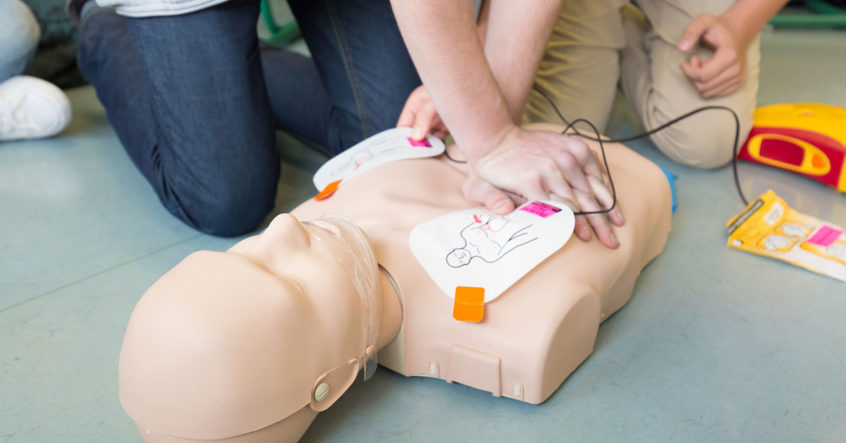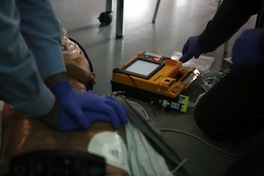Complete AED (Defibrillator) Buyers Guide – updated 2020
This short guide was created to help you understand the basics of shopping for defibrillators online and to help you choose the right defibrillator for you. We do not sell any defibrillators ourselves, so you can be assured that all of the information in this guide is independent and unbiased.
What Does a Defibrillator Do?
For normal function, the heart needs organized electrical impulses to contract the muscles and pump blood throughout the body. A cardiac arrest occurs when the electrical system of the heart becomes chaotic and disorganized and the heart becomes still. This condition is known as ventricular fibrillation, and the best treatment to ‘re-start the heart’ is an electric shock to the heart to jolt it back into its regular rhythm (defibrillation). Outside of a hospital environment, this shock can be delivered by automated external defibrillators (AEDs).
The use of automated external defibrillators for use at work, at home, in churches, gyms, restaurants, and other public and private locations is becoming more and more popular. Defibrillators can mean the difference between life and death in the case of heart attacks and sudden cardiac arrest. A victim’s chance of survival drops by about 10 percent for every minute that medical treatment is delayed, and permanent brain damage can occur in as few as five minutes. About 250,000 people die annually from cardiac arrest, often because emergency treatment is simply provided too late. By installing AEDs in public places and in homes where there is a risk of cardiac arrest, these easy-to-use defibrillators are projected to save thousands of lives each year.
How Defibrillators Work
AEDs are user-friendly, automated devices that typically use voice-prompted messages to guide the operator through the complete operating sequence. To begin, the operator peels the adhesive stickers from the backs of two electrodes and places the electrodes on the bare skin of a victim’s chest with one electrode over the heart and another slightly to the left. The defibrillator will then do an automated analysis of the victim’s heart rhythm, and delivers a shock only if it diagnoses a cardiac arrest. Although the shocks are much smaller and more benign than those delivered by hospital defibrillators, it is still recommended that no one is in contact with the victim during the shock.
Choosing a Defibrillator
Shopping online is by far the easiest and best way to find the right defibrillator for you. You can compare multiple brands and models side by side, find the best price for the defibrillator you want, and can have the defibrillator shipped right to your door. Because it is a medical device, you may need authorization from a doctor to purchase a defibrillator; some sites that sell defibrillators will even obtain this prescription for you.
There are some common elements of all new defibrillators that you should be aware of.
All automated external defibrillators (AEDs) on the market:
- are FDA approved
- save lives equally
- use visual and voice prompts
- use biphasic (two-phase) shock
- come with a warranty
There are also some differences to consider when shopping for the right defibrillator for you:
- Display/functionality – how easy the unit is to work, how large the display is, how detailed the voice prompting is, etc.
- Battery costs – to compare battery costs, simply find out the battery life and multiply times the cost of the replacement battery to determine your battery costs.
- Internal testing – all AEDs perform self-tests and will alert you if there is a problem. Make sure the electrodes are tested as well.
- Accessories – different AEDs brands and models come with various accessories, such as carrying cases, spare electrodes, and so on.
- Pediatric use – if you have a potential need to use a defibrillator on younger patients, make sure to find out if the AED you choose is safe for smaller persons.
Our Recommended Defibrillator
The Phillips HeartStart defibrillator is our reccomended home defibrillator model. This device is easy to use in an emergency situation and has a four-year battery life. Battery replacement can be costly when considering AEDs.








im a beginner to this